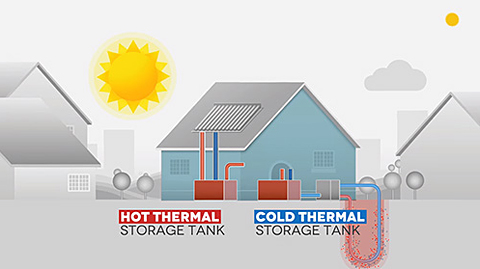 The TESSe2b project is a European project, funded at €4.3 million under the Horizon 2020 program, which began in October 2015 and lasts 4 years (www.tesse2b.eu). The consortium consists of five higher education institutions, one research center and three SME and a non-profit organization, from from 8 countries, Portugal, Greece, Cyprus, Spain, Austria, Germany, Poland and the United Kingdom. The project is coordinated by the Polytechnic Institute of Setúbal (IPS, Prof. Luis Coelho).
The TESSe2b project is a European project, funded at €4.3 million under the Horizon 2020 program, which began in October 2015 and lasts 4 years (www.tesse2b.eu). The consortium consists of five higher education institutions, one research center and three SME and a non-profit organization, from from 8 countries, Portugal, Greece, Cyprus, Spain, Austria, Germany, Poland and the United Kingdom. The project is coordinated by the Polytechnic Institute of Setúbal (IPS, Prof. Luis Coelho).
The main objective of the project is to design, develop and demonstrate a modular and low cost system of thermal storage technology based on solar collectors and efficient heat pumps for heating, cooling and hot water production (DHW) contributing to the increase the share of renewables and to the flexibility of the electricity grid.
This project is expected to find a solution to reduce energy consumption in homes by up to 30% for heating, cooling and DHW production, with consequent reductions in energy billing for the final consumer, with a simple period of return of the initial investment in about 8 to 9 years.
The storage thermal energy will be carried out at three temperature levels for cooling, heating and DHW production.
Suitable Phase Change Materials (PCMs) were selected for each application, using two types of PCMs, organic (paraffins) and hydrated salts, comparing their performance in each application.
The tanks filled with PCMs have some particularities, namely the fact that they are modular, in order to allow them to be easily adapted in terms of capacity, climate conditions and easy assembled in existing buildings. Another peculiarity has to do with the development of heat exchangers (HEx) inside these tanks, immersed in PCM.
Some problems have been solved such as the incompatibility between paraffin-type PCMs and thermoplastic-based tank walls through a protective coating, the low thermal conductivity of the paraffins through the use of nanoparticles (nano-composite enhanced paraffin, NEPCM) or the use of an adequate geometry of HEx tubes and fins and a protection of the HEx metal parts from the corrosion of hydrated salts through a protective film.
Another innovation is the use of the paraffins in the boreholes heat exchangers (BHEx), mixed with the grout material, in an encapsulated form. The objective is to increase of the temperature stability of the BHEx, increasing the efficiency of the geothermal heat pump.
An intelligent control and self-learning system is also being developed in order to take full advantage of the potential of the proposed thermal system.
In the last year of the project, the TESSe2b system will be demonstrated and validated on a real scale in three houses, Austria, Cyprus and Spain, with the objective of covering three different climates.
The current phase of the project is finalizing the pre-prototype tests, the results achieved are promising, successfully reaching the proposed objectives.
After completing the project, the consortium intends to commercialize the system, through possible partnerships with companies outside the consortium.
This project has received funding from the European Union's Horizon 2020 research and innovation programme, grant agreement No 680555.
This article reflects only the author‘s view and the European Commission is not responsible for any use that may be made of the information it contains.
Contact information
Project Coordinator:
Name: Luis Coelho
Email: luis.coelho@estsetubal.ips.pt
Phone: +351 265 790 000